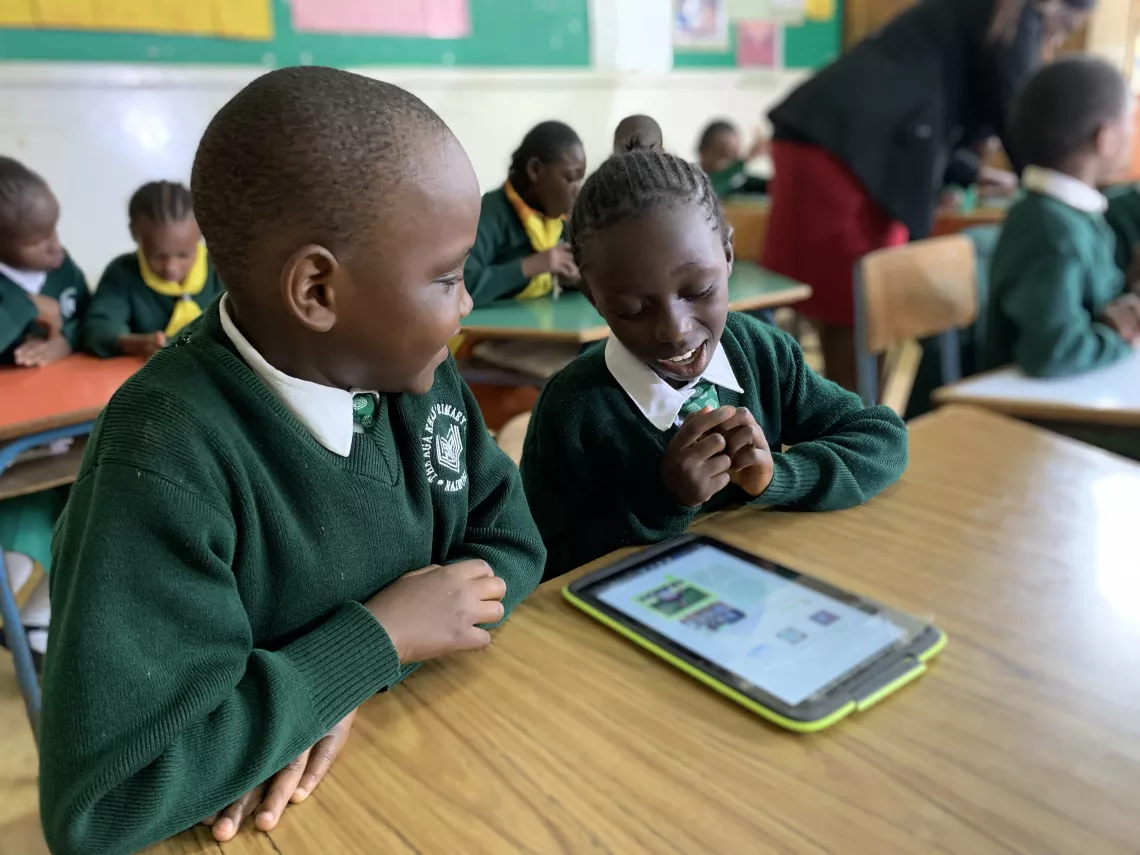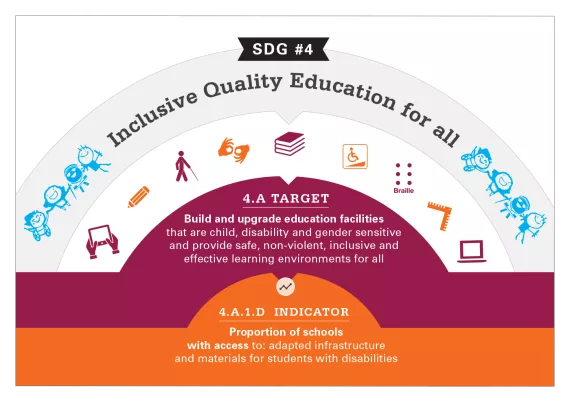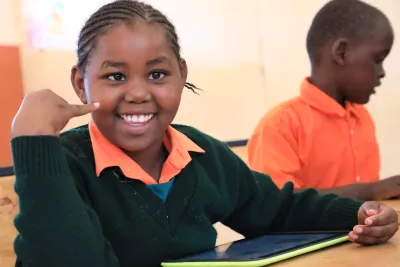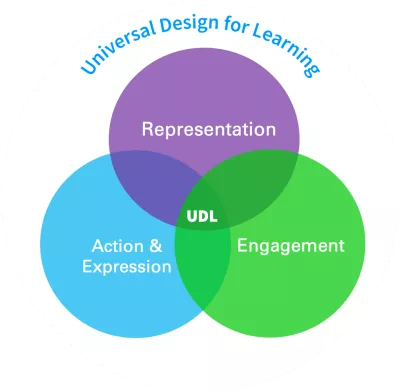Accessible Digital Textbooks for All Initiative
Making digital textbooks accessible, affordable and available for all children
- Available in:
- English
- Español
Challenges

All children can learn and should be given the opportunity to reach their full academic potential, but most children with disabilities are out of school and lack access to inclusive quality learning. To address SDG 4, accessible and affordable learning materials are required, and UNICEF has been working since 2014 to address this challenge. Accessible digital textbooks for all is an initiative part of the global agenda of UNICEF on Inclusive education. It is about appreciating learners’ diversity, valuing their well-being, respecting their inherent dignity and autonomy. It is also about recognizing individuals’ needs and their ability to effectively participate, be included in and contribute to society. Article 24 of the Convention on the Rights of Persons with Disabilities (CRPD) states that persons with disabilities should have the right “to inclusive education, at all levels, without discrimination and on the basis of equality of opportunity. Contracting states must ensure that children with disabilities are provided with reasonable accommodation of their needs” (United Nations, 2006).
Though the exact number remains unknown and more recent data are not available, an estimated 93 to 150 million children under 18 years of age worldwide have disabilities (WHO, 2011). Children with disabilities remain one of the most marginalized and excluded groups and face multiple barriers and challenges related to accessing education.
In addition, lack of access to quality education continues to be one of the largest challenges for children with disabilities. In accessible education facilities, inflexible curricula, the lack of assistive devices, inaccessible learning materials and teachers who are not yet prepared to support diverse learning needs in the classroom can all serve as barriers to the education of students with disabilities (Hayes, Turnbull and Moran, 2018). The lack of these essential components can result in students not enrolling in schools, dropping out or remaining in school but not achieving their full academic potential. Accessible digital textbooks can help address the issue of accessible learning materials, which is one of many elements needed to promote an inclusive environment for students with disabilities.
No printed book can offer all the features needed to ensure access for everyone. The aim of this initiative is to improve education outcomes for all students by providing them access to the curriculum in multiple mediums.

An accessible digital textbook is a digital tool that gives all learners, including those with disabilities, access to information in alternative accessible formats.
Through specialized features in digital formats, printed books can be made accessible to learners who are blind or have low vision, those who are deaf or hard of hearing, those who have intellectual or developmental disabilities or learning disabilities, or those who prefer to access information without visual input. All students learn differently. The ‘one-size-fits-all’ approach to education fails to recognize the various learning requirements that benefit different learners, including those with disabilities. As a result, teaching methods tend to address only one or two learning styles, often leaving the other students frustrated, less engaged and less motivated to learn. Providing differentiated learning, and/or providing instruction and materials that meet different learning requirements, can help improve learning outcomes.
Solutions

By bringing together writers, publishers, teachers, organizations of persons with disabilities (OPD), technology developers, MOE representatives and other stakeholders, the initiative ensures the development of the standards and guidelines needed to produce textbooks and learning materials in accessible digital formats and languages.
To make the materials accessible to a wide range of students, including those with disabilities, textbooks and learning materials must combine, at a minimum, accessible features like narration, sign language, interactivity and the audio description of images.
While the early stages of the initiative focus on materials specific to the foundational years of education, including preschool and the early grades of primary school, the goal is for all learning materials to be made available in accessible digital formats. This initiative is based in the educational system, established by the MOE as part of policy for all and implemented through procurement or other processes. This guarantees sustainability, product quality and the regulated provision of accessible digital textbooks for students with different learning styles. Publishers are key stakeholders in the production and distribution of accessible digital textbooks.
Using the CRPD as a framework, this initiative aims to extend educational opportunities to all children, including those currently out of school and those on the move, by serving as motivation to re-engage with formal education.
Universal Design for Learning approach applied to accessible digital textbooks
A textbook developed under a “Universal Design for Learning” approach will have more features that are more effective for more people in more situations. In this innovation, the features of the technology proposed for one type of disability are often equally useful for different types of disabilities. Through specialized features in digital formats, printed books can be made accessible to those who are blind or have low vision, those who are deaf or hard of hearing, those who have intellectual or developmental disabilities or learning disabilities, or those who prefer to access information without visual input. The approach used by this initiative allows students to build upon their inherent learning requirements instead of being restricted to using learning materials that may act as unnecessarily challenging barriers.
UNICEF's convening role in the development of Accessible Digital Textbooks includes:
Partnerships and engagement
UNICEF partners with key stakeholders and donors in the private and public sectors at the country and global levels to develop and implement the Accessible Digital Textbooks for All initiative. Our partnerships seek to increase the adoption of accessible digital textbooks in the global book chain and boost funding while building trust, motivation and skills to make informed decisions and take appropriate actions towards implementing the initiative at a country level. UNICEF also aim to engage children with disabilities, communities, teachers, parents and caregivers in the whole process.
Evidence and use
To intensify the production of accessible digital textbooks using Universal Design for Learning (UDL) principles, UNICEF is working with key stakeholders to pilot the initiative in five countries and to validate the guidance and standards that will eventually be adopted and used by all stakeholders involved in the book chain.
Innovations
UNICEF supports the development of quality accessible digital textbooks, including applying UDL principles to the latest accessible publishing technology to increase the books’ demand and supply.
Knowledge sharing
Accessible to all key stakeholders, UNICEF’s global portal on the Accessible Digital Textbooks initiative encourages ministries of education, donors and publishers to commit to making accessible digital textbooks available to learners with disabilities. It allows sharing knowledge, products and models with other countries, including facilitating south-south cooperation.
Advocacy
UNICEF is negotiating and advocating for the inclusion of all accessible adaptations of textbooks and learning materials from the curriculum, covered by copyright agreements to ensure access for all, as part of the accessible digital textbooks initiative with implementing countries.
Policy
UNICEF supports the development of policies to ensure accessible digital textbooks and learning tools are available nationally to guarantee that learners with disabilities are using these textbooks and that learning outcomes are measured.
Capacity development
UNICEF supports training to improve the capacity of publishers, authors, curriculum developers, teachers, learners, parents and caregivers as well as other stakeholders to produce and use accessible digital textbooks using UDL principles.
The goal
The goal is for all learners with disabilities to have equal access to quality learning through accessible and affordable digital textbooks in all contexts.
UNICEF and its partners believe that:
If committed MOEs and key stakeholders partner and invest in making accessible digital textbooks available for children with disabilities…
If governments and families invest in assistive technology (hardware, software, computer, tablets, smartphones) …
If standards and guidelines are jointly developed, adopted and used by all stakeholders involved in the book chain...
If the book chain ecosystem has the capacity to produce and distribute accessible digital textbooks to children with disabilities…
If the communities, teachers, parents and caregivers value education for children with disabilities…
If children with disabilities, teachers, parents and caregivers are committed, trained and have access to technology…
…then quality textbooks in digital format will be accessible, available and affordable for learners with disabilities in development and humanitarian contexts.


